
In an ideal world, all of your baked goods would come out of the oven soft, moist and perfectly baked. Unfortunately that's not the reality bakers face, and as a result cookbooks and the Internet are awash in advice for those whose baked goods are coming out dry. Don't panic if you turn out an arid cake or batch of cupcakes. Dry baked goods are usually salvageable, and you can take steps to prevent it happening again in the future.
Damp It Down
When your lawn is dry you simply sprinkle it with water, and pragmatic bakers and pastry chefs take a similar approach with dry cakes. One trick of professionals is to keep a light sugar syrup, known as simple syrup, close to hand. You can make your own by simmering 2 cups each of water and sugar for 10 minutes, then cooling it. Slice your cake in half horizontally, or slice the domed portion from the top, to open it up. Then sprinkle it liberally with simple syrup -- perfumed with rum, brandy or liqueur, if you like -- and assemble your cake. After sitting overnight, the moisture will be distributed through the cake and make it pleasantly moist.
Fill It Up
You can achieve a similar effect by filling cakes, cupcakes or muffins with a moist filling. With cakes, pipe a ring of buttercream around the edge of the bottom layer to act as a dam and keep your squishy filling in place. Spoon in fruit preserves, whipped cream or a custard filling, then assemble and frost the cake as usual. Overnight, it'll absorb moisture from the filling. With cupcakes or muffins, cut a cone-shaped plug from the domed top of each one. Fill the hole with whipped cream, cream-based filling or fruit preserves. Trim the cut-out plug to leave just a thin cap, and use it to cover the filling. Spread icing over top, if appropriate.
Getting Steamy
Small baked goods such as muffins, cupcakes and croissants can be resuscitated by physically steaming them. Place them over gently simmering water in a steamer basket, doing just a few at a time and leaving plenty of room between them for steam to circulate. Steam flat items for 2 to 3 minutes and round items for 3 to 5. Wrap them loosely in a clean kitchen towel and let them cool for at least 30 minutes, preferably longer, so the moisture can become evenly distributed throughout.
Tweaking the Recipe
Preventing your baked goods from becoming dry in the first place usually starts with the recipe. Moisture in items such as cakes and muffins comes from liquid ingredients -- including eggs -- and the fats. If you're having problems with one specific recipe, compare it to others that work well for you. You'll probably find that your troublesome recipe uses less fat, eggs or liquid ingredients. If you've recently moved, check with your local country extension office. Baked goods tend to be dry at elevations of 3,000 feet or more, and you'll need to increase the amount of liquids called for in your recipe.
In the Oven
One of the most common reasons for baked goods to be dry is that you're overbaking them. If the edges of the cake are pulling way from the pan, it's probably done. When you insert a cake tester into the center it shouldn't come out with uncooked batter on it, but a few moist crumbs are perfectly fine. Often, overbaking is the result of a poorly calibrated oven. Purchase one or two inexpensive oven thermometers and put them in your oven. Check the oven's thermostat against the thermometer readings and adjust it until you reach the correct baking temperature.
Related Articles

Why Is My Cake Dry & Crumbly?

What Causes Cupcakes to Be Dry?
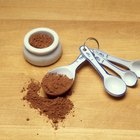
Will Adding Cocoa Powder to a Cake Dry ...

Easy White Cake Recipe
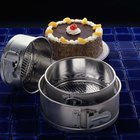
How to Keep Cake Edges From Hardening ...
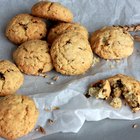
Why Do My Biscuits Turn Out Hard and ...
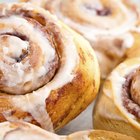
How to Cook Cinnamon Rolls in the ...

How to Make a Princess Doll Using the ...

How to Thicken Cake Batter
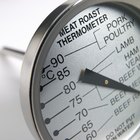
How to Cook Tender Rolled Flank Steaks ...
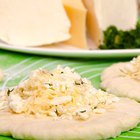
How Many Calories in a Cheese Scone?
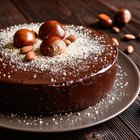
What Causes My Cake to Fall When ...

How to Clean an Oven Liner

How to Mail Girl Scout Cookies

How Long Do You Bake Brownie Cupcakes ...

How to Stretch Ears With Tape
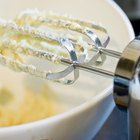
Does Baking Soda Affect the Height of a ...

How to Cook Steel-Cut Oats in a Slow ...

How to Keep Cream Puffs From Deflating
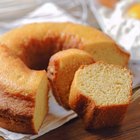
Can Dry Pudding Be Added to Cake Mixes?
References
- The Professional Pastry Chef; Bo Friberg
- On Food and Cooking: The Science and Lore of the Kitchen; Harold McGee
- Baking Bites: How to Make Filled Cupcakes, Step-by-Step
Writer Bio
Fred Decker is a trained chef and prolific freelance writer. In previous careers, he sold insurance and mutual funds, and was a longtime retailer. He was educated at Memorial University of Newfoundland and the Northern Alberta Institute of Technology. His articles have appeared on numerous home and garden sites including GoneOutdoors, TheNest and eHow.
Photo Credits
Photodisc/Photodisc/Getty Images